Legal Governance in the Smart Cities of China: Functions, Problems, and Solutions
Abstract
:1. Introduction
2. Methodology
2.1. Using Principal Component Analysis to Describe the Development of Digital Economy in Chinese Cities
2.2. Using Desk Research to Find Problems in the Legal Governance of Smart Cities in China
2.3. Using International Case Studies to Provide Lessons for China
3. Functions of Legal Governance in Smart Cities’ Construction
3.1. The Constraction of Digital Economy Index
3.1.1. The Computation of the Digital Economy Index
3.1.2. Smart City Construction and Development Status in China
3.2. Legislative Status of Smart Cities in China
3.2.1. Central Legislative Level
3.2.2. Local Legislative Level
3.3. The Relationship between Legal Governance and Smart City Development
3.3.1. Central Legislation Provides Top-Level Design Guidelines for Smart City Development
3.3.2. Local Legislation Provides Solutions Tailored to Local Conditions for the Construction of Characteristic Smart Cities
4. Key Issues Facing the Legal Governance of Smart Cities in China
4.1. Smart City Infrastructure Operation Framework and Key Points of Governance
4.2. Key Issues Facing the Legal Governance of Smart Cities in China
4.2.1. Data Alienation and Regulation Issues
4.2.2. Data Security Issues
4.2.3. Government Data and Public Data Openness and Sharing Issues
5. Extraterritorial Experience of Smart City Legal Governance
5.1. New York: Coordination of Data Openness and Data Security with Local Regulations
5.2. London: A Smart City Digital Governance Framework Constructed by Central and Local Legal Norms
6. Lessons Learned and Recommendations for China
6.1. Building an Institutional Foundation for Smart City Development with Systematic and Scientific National Legislation
6.2. Implement Smart City Governance Measures with Comprehensive and Refined Local Laws and Regulations
6.3. Building a Safe and Sustainable Smart City Development Environment with a Polycentric Soft Law System
7. Conclusions, Limitations, and Future Work
7.1. Conclusions
7.2. Limitations and Future Work
Author Contributions
Funding
Conflicts of Interest
References
- CAICT. China Urban Digital Economy Development Report. 2021. Available online: http://www.caict.ac.cn/kxyj/qwfb/ztbg/202112/P020211221381181106185.pdf (accessed on 4 July 2022).
- Scott, A.J.; Storper, M. The Nature of Cities: The Scope and Limits of Urban Theory. Int. J. Urban Reg. 2015, 39, 1–15. [Google Scholar] [CrossRef] [Green Version]
- Young, M. Justice and the Politics of Difference; Princeton University Press: Princeton, PCN, USA, 1990; pp. 10–25. ISBN 0-691-07832-7. [Google Scholar]
- Keymolen, E.; Voorwinden, A. Can we negotiate? Trust and the rule of law in the smart city paradigm. Int. Rev. Law Comput. Technol. 2020, 34, 233. [Google Scholar] [CrossRef] [Green Version]
- Nagenborg, M. Urban robotics and responsible urban innovation. Ethics Inf. Technol. 2020, 22, 345–355. [Google Scholar] [CrossRef] [Green Version]
- Luo, P.; Liu, L.; Wang, S.; Ren, B.; Nover, D. Influence assessment of new Inner Tube Porous Brick with absorbent concrete on urban floods control. Case Stud. Constr. Mater. 2022, 17, e01236. [Google Scholar] [CrossRef]
- Hildebrandt, M. Balance or trade-off? Online security technologies and fundamental rights. Philos. Technol. 2013, 26, 357–379. [Google Scholar] [CrossRef] [Green Version]
- Azevedo, L.; Carvalho, J.; Dos, M.; Rodriguez, M.; Pereira, A. Smart Cities: The Main Drivers for Increasing the Intelligence of Cities. Sustainability 2018, 10, 3121. [Google Scholar] [CrossRef] [Green Version]
- Duan, W.; Maskey, S.; Chaffe, P.L.B.; Luo, P.; He, B.; Wu, Y.; Hou, J. Recent Advancement in Remote Sensing Technology for Hydrology Analysis and Water Resources Management. Remote Sens. 2021, 13, 1097. [Google Scholar] [CrossRef]
- Angelidou, M. Smart cities: A conjuncture of four forces. Cities 2015, 47, 95–106. [Google Scholar] [CrossRef]
- Zhang, Y.; Luo, P.; Zhao, S.; Kang, S.; Wang, P.; Zhou, M.; Lyu, J. Control and remediation methods for eutrophic lakes in the past 30 years. Water Sci. Technol. 2020, 81, 1099–1113. [Google Scholar] [CrossRef]
- Smith, K. The Inconvenient Truth about Smart Cities. Available online: https://blogs.scientificamerican.com/observations/the-inconvenient-truth-about-smart-cities/ (accessed on 21 May 2022).
- Reddy, S.; Babu, G.; Murthy, N. Transportation planning aspects of a smart city–case study of GIFT City, Gujarat. Transp. Res. Procedia 2016, 17, 134–144. [Google Scholar] [CrossRef]
- Vijai, P.; Sivakumar, B. Design of IoT systems and analytics in the context of smart city initiatives in India. Procedia Comput. Sci. 2016, 92, 583–588. [Google Scholar] [CrossRef] [Green Version]
- Wu, Y.; Zhang, W.; Shen, J.; Mo, Z.; Peng, Y. Smart city with Chinese characteristics against the background of big data: Idea, action and risk. J. Clean. Prod. 2018, 173, 60–66. [Google Scholar] [CrossRef]
- Wen, J.; Deng, P.; Zhang, Q.; Chang, C.-P. Is Higher Government Efficiency Bringing about Higher Innovation? TEDE 2021, 27, 626–655. [Google Scholar] [CrossRef]
- Wei, X.; Wang, N.; Luo, P.; Yang, J.; Zhang, J.; Lin, K. Spatiotemporal Assessment of Land Marketization and Its Driving Forces for Sustainable Urban–Rural Development in Shaanxi Province in China. Sustainability 2021, 13, 7755. [Google Scholar] [CrossRef]
- Mu, D.; Luo, P.; Lyu, J.; Zhou, M.; Huo, A.; Duan, W.; Nover, D.; He, B.; Zhao, X. Impact of temporal rainfall patterns on flash floods in Hue City, Vietnam. J. Flood Risk Manag. 2021, 14, e12668. [Google Scholar] [CrossRef]
- Huang, W.; Duan, W.; Chen, Y. Rapidly declining surface and terrestrial water resources in Central Asia driven by socio-economic and climatic changes. Sci. Total Environ. 2021, 784, 147193. [Google Scholar] [CrossRef]
- Joshi, S.; Saxena, S.; Godbole, T. Developing smart cities: An integrated framework. Procedia Comput. Sci. 2016, 93, 902–909. [Google Scholar] [CrossRef] [Green Version]
- Xie, D.; Duan, L.; Si, G.; Liu, W.; Zhang, T.; Mulder, J. Long-Term 15N Balance After Single-Dose Input of 15N-Labeled NH4+ and NO3− in a Subtropical Forest Under Reducing N Deposition. Glob. Biogeochem. Cycles 2021, 35, 6959. [Google Scholar] [CrossRef]
- Wei, X.; Yang, J.; Luo, P.; Lin, L.; Lin, K.; Guan, J. Assessment of the variation and influencing factors of vegetation NPP and carbon sink capacity under different natural conditions. Ecol. Indic. 2022, 138, 108834. [Google Scholar] [CrossRef]
- Zhu, W.; Wang, S.; Luo, P.; Zha, X.; Cao, Z.; Lyu, J.; Zhou, M.; He, B.; Nover, D. A Quantitative Analysis of the Influence of Temperature Change on the Extreme Precipitation. Atmosphere 2022, 13, 612. [Google Scholar] [CrossRef]
- Hefnawy, A.; Bouras, A.; Cherifi, C. Relevance of lifecycle management to smart city development. Int. J. Prod. Dev. 2018, 22, 351–376. [Google Scholar] [CrossRef]
- Haarstad, H.; Wathne, W. Are smart city projects catalyzing urban energy sustainability? Energy Policy 2019, 129, 918–925. [Google Scholar] [CrossRef]
- Zhang, Y.; Huang, C.C.; Tan, Z.; Chen, Y.; Qiu, H.; Huang, C.; Li, Y.; Zhang, Y.; Li, X.; Shulmeister, J.; et al. Prehistoric and historicoverbank floods in the Luoyang Basin along the Luohe River, middle Yellow River basin, China. Quat. Int. 2019, 521, 118–128. [Google Scholar] [CrossRef]
- Chintagunta, L.; Raj, P.; Narayanaswami, S. Conceptualization to amendment: Kakinada as a smart city. J. Public Aff. 2019, 19, e1879. [Google Scholar] [CrossRef]
- Weber, M.; Podnar, I. A Regulatory View on Smart City Services. Sensors 2019, 19, 415. [Google Scholar] [CrossRef] [PubMed] [Green Version]
- Gil, R.; Aldama, A. Smart city initiatives and the policy context: The case of the rapid business opening office in Mexico City. In Proceedings of the 7th International Conference on Theory and Practice of Electronic Governance, Seoul, Korea, 22–25 October 2013; pp. 234–237. [Google Scholar] [CrossRef]
- Duan, W.; Zou, S.; Chen, Y.; Nover, D.; Fang, G.; Wang, Y. Sustainable water management for cross-border resources: The Balkhash Lake Basin of Central Asia. J. Clean. Prod. 2020, 263, 1931–2015. [Google Scholar] [CrossRef]
- Hamza, K. Smart city implementation framework for developing countries: The case of Egypt. In Smarter as the New Urban Agenda; Springer: Cham, Switzerland, 2016; pp. 171–187. [Google Scholar] [CrossRef]
- Hámor-Vidó, M.; Hámor, T.; Czirok, L. Underground space, the legal governance of a critical resource in circular economy. Resour. Policy 2021, 73, 102171. [Google Scholar] [CrossRef]
- Luo, P.; Mu, Y.; Wang, S.; Zhu, W.; Mishra, B.K.; Huo, A.; Zhou, M.; Lyu, J.; Hu, M.; Duan, W.; et al. Exploring sustainable solutions for the water environment in Chinese and Southeast Asian cities. Ambio A J. Hum. Environ. 2021, 9, 1–20. [Google Scholar] [CrossRef]
- Zha, X.; Luo, P.; Zhu, W.; Wang, S.; Lyu, J.; Zhou, M.; Huo, A.; Wang, Z. A bibliometric analysis of the research on Sponge City: Current situation and future development direction. Ecohydrology 2021, 14, 2328. [Google Scholar] [CrossRef]
- Repette, P.; Sabatini-Marques, J.; Yigitcanlar, T.; Sell, D.; Costa, E. The Evolution of City-as-a-Platform: Smart Urban Development Governance with Collective Knowledge-Based Platform Urbanism. Land 2021, 10, 33. [Google Scholar] [CrossRef]
- Tan, S.; Taeihagh, A. Smart City Governance in Developing Countries: A Systematic Literature Review. Sustainability 2020, 12, 899. [Google Scholar] [CrossRef] [Green Version]
- Zhu, Y.; Luo, P.; Zhang, S.; Sun, B. Spatiotemporal Analysis of Hydrological Variations and Their Impacts on Vegetation in Semiarid Areas from Multiple Satellite Data. Remote Sens. 2020, 12, 4177. [Google Scholar] [CrossRef]
- Liu, J.; Yang, Y.; Zhang, S. Research on the Measurement and Driving Factors of China’s Digital Economy. Shanghai Econ. Res. 2020, 6, 81–96. [Google Scholar]
- Kearney, A.T. 2021 Global Cities Index. Available online: http://www.199it.com/archives/1359892.html (accessed on 1 July 2022).
- Huang, K.; Luo, W.; Zhang, W.; Li, J. Characteristics and Problems of Smart City Development in China. Smart Cities 2021, 4, 1403–1419. [Google Scholar] [CrossRef]
- Nam, T.; Pardo, T.A. Conceptualizing smart city with dimensions of technology, people, and institutions. In Proceedings of the 12th Annual International Digital Government Research Conference: Digital Government Innovation in Challenging Times, College Park, MD, USA, 12–15 June 2011; Association for Computing Machinery: New York, NY, USA, 2011; pp. 282–291. [Google Scholar]
- Närvänen, L. Age, ageing and the life course. In Changing Worlds and the Ageing Subject; Routledge: London, UK, 2018; pp. 65–80. [Google Scholar]
- Cocchia, A. Smart and digital city: A systematic literature review. In Smart City: How to Create Public and Economic Value with High Technology in Urban Space; Dameri, R.P., Rosenthal-Sabroux, C., Eds.; Springer: Cham, Switzerland, 2014; pp. 13–43. [Google Scholar] [CrossRef]
- Soe, M.; Drechsler, W. Agile local governments: Experimentation before implementation. Gov. Inf. Q. 2018, 35, 323–335. [Google Scholar] [CrossRef]
- Fisher, E. How Less Alienation Creates More Exploitation? Audience Labour on Social Network Sites. tripleC: Commun. Capital. Critique 2012, 10, 171–183. [Google Scholar] [CrossRef]
- Andrejevic, M. Exploitation in the data mine. In Internet and Surveillance; Routledge Press: London, UK, 2013; pp. 71–88. ISBN 9780203806432. [Google Scholar]
- Fuchs, C. Social Media, Big Data, and Critical Marketing; Routledge Press: London, UK, 2018; pp. 467–481. ISBN 9781315630526. [Google Scholar]
- Edwards, L. Privacy, security and data protection in smart cities: A critical EU law perspective. Eur. Data Prot. Law Rev. 2016, 2, 28. [Google Scholar] [CrossRef]
- National Computer Network Emergency Technology Handling Coordination Center, China Cyberspace Security Association. App Illegal Collection and Use of Personal Information Monitoring and Analysis Report. Available online: https://unctad.org/system/files/official-document/wir2017_en.pd (accessed on 1 July 2022).
- CAICT. Data Security Analysis and Coping Strategy Research. Available online: http://www.caict.ac.cn/kxyj/qwfb/ztbg/202201/t20220118_395765.htm (accessed on 17 June 2022).
- CAICT. Digital Rule Blueskin Report. Available online: http://www.caict.ac.cn/kxyj/qwfb/ztbg/202112/P020211210403054888030.pdf (accessed on 21 May 2022).
- Li, C.; Liu, X.; Dai, Z.; Zhao, Z. Smart City: A Shareable Framework and Its Applications in China. Sustainability 2019, 11, 4346. [Google Scholar] [CrossRef] [Green Version]
- Chen, C.; Wang, Z.; Guo, B. The road to the Chinese smart city: Progress, challenges, and future directions. IT Prof. 2016, 18, 14–17. [Google Scholar] [CrossRef]
- CAICT. Government Data Sharing and Open Security Report. Available online: http://www.caict.ac.cn/kxyj/qwfb/ztbg/202101/P020210114593587797769.pdf (accessed on 21 May 2022).
- Kearney, A.T. 2020 Global Cities Index. New Priorities for a New World. Available online: https://www.kearney.com/global-cities/2020 (accessed on 21 May 2022).
- Janssen, M.; Voort, H. Adaptive governance: Towards a stable, accountable and responsive government. Gov. Inf. Q. 2016, 33, 1–5. [Google Scholar] [CrossRef]
- Guo, B.; Wang, X.; Pei, L.; Su, Y.; Zhang, D.; Wang, Y. Identifying the spatiotemporal dynamic of PM2.5 concentrations at multiple scales using geographically and temporally weighted regression model across China during 2015–2018. Sci. Total Environ. 2021, 751, 141765. [Google Scholar] [CrossRef] [PubMed]
- Shah, J.; Kothari, J.; Doshi, N. A survey of smart city infrastructure via case study on New York. Procedia Comput. Sci. 2019, 160, 702–705. [Google Scholar] [CrossRef]
- Luo, P.; Xu, C.; Kang, S.; Huo, A.; Lyu, J.; Zhou, M.; Nover, D. Heavy Metals in Water and Surface Sediments of the Fenghe River Basin, China: Assessment and Source Analysis. Water Sci. Technol. 2021, 84, 3072–3090. [Google Scholar] [CrossRef]
- Angelidou, M. The role of smart city characteristics in the plans of fifteen cities. J. Urban Technol. 2017, 24, 3–28. [Google Scholar] [CrossRef]
- Morozov, E.; Bria, F. Rethinking the Smart City. Democratizing Urban Technology; Rosa Luxemburg Foundation: New York, NY, USA, 2018; p. 2. [Google Scholar]
- Ferreri, M.; Sanyal, R. Platform economies and urban planning: Airbnb and regulated deregulation in London. Urban Stud. 2018, 55, 3353–3368. [Google Scholar] [CrossRef]
- Ferrara, R. The Smart City and the Green Economy in Europe: A Critical Approach. Energies 2015, 8, 4724–4734. [Google Scholar] [CrossRef] [Green Version]
- Zvolska, L.; Lehner, M.; Voytenko, Y.; Mont, O. Urban sharing in smart cities: The cases of Berlin and London. Local Environ. 2019, 24, 628–645. [Google Scholar] [CrossRef] [Green Version]
- Vojković, G.; Katulić, T. Data protection and smart cities. In Handbook of Smart Cities; Springer: Cham, Switzerland, 2020; pp. 1–26. [Google Scholar] [CrossRef]
- Almirall, E.; Wareham, J.; Ratti, C.; Conesa, P.; Bria, F.; Gaviria, A.; Edmondson, A. Smart cities at the crossroads: New tensions in city transformation. Calif. Manag. Rev. 2016, 59, 141–152. [Google Scholar] [CrossRef]
- Founoun, A.; Hayar, A. Evaluation of the concept of the smart city through local regulation and the importance of local initiative. In Proceedings of the 2018 IEEE International Smart Cities Conference (ISC2), Kansas City, MO, USA, 16–19 September 2018; pp. 1–6. [Google Scholar]
- Meier, J. Collaborative Governance: Private Roles for Public Goals in Turbulent Times by John D. Donahue and Richard J. Zeckhauser. Int. Public Manag. J. 2011, 14, 464. [Google Scholar] [CrossRef]
- Hagemann, R.; Huddleston, J.; Thierer, A. Soft law for hard problems: The governance of emerging technologies in an uncertain future. Colo. Technol. Law J. 2018, 17, 37. [Google Scholar]

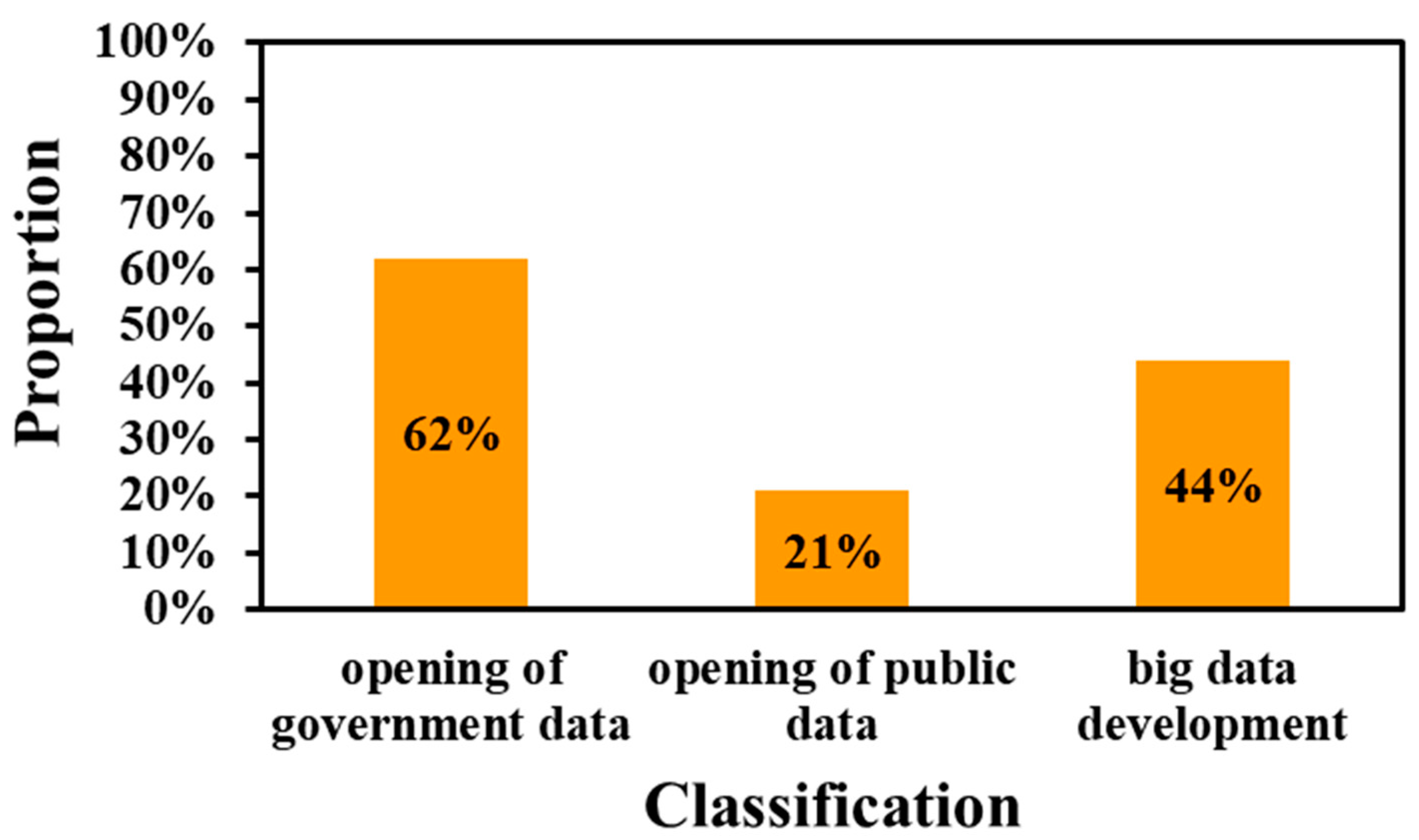
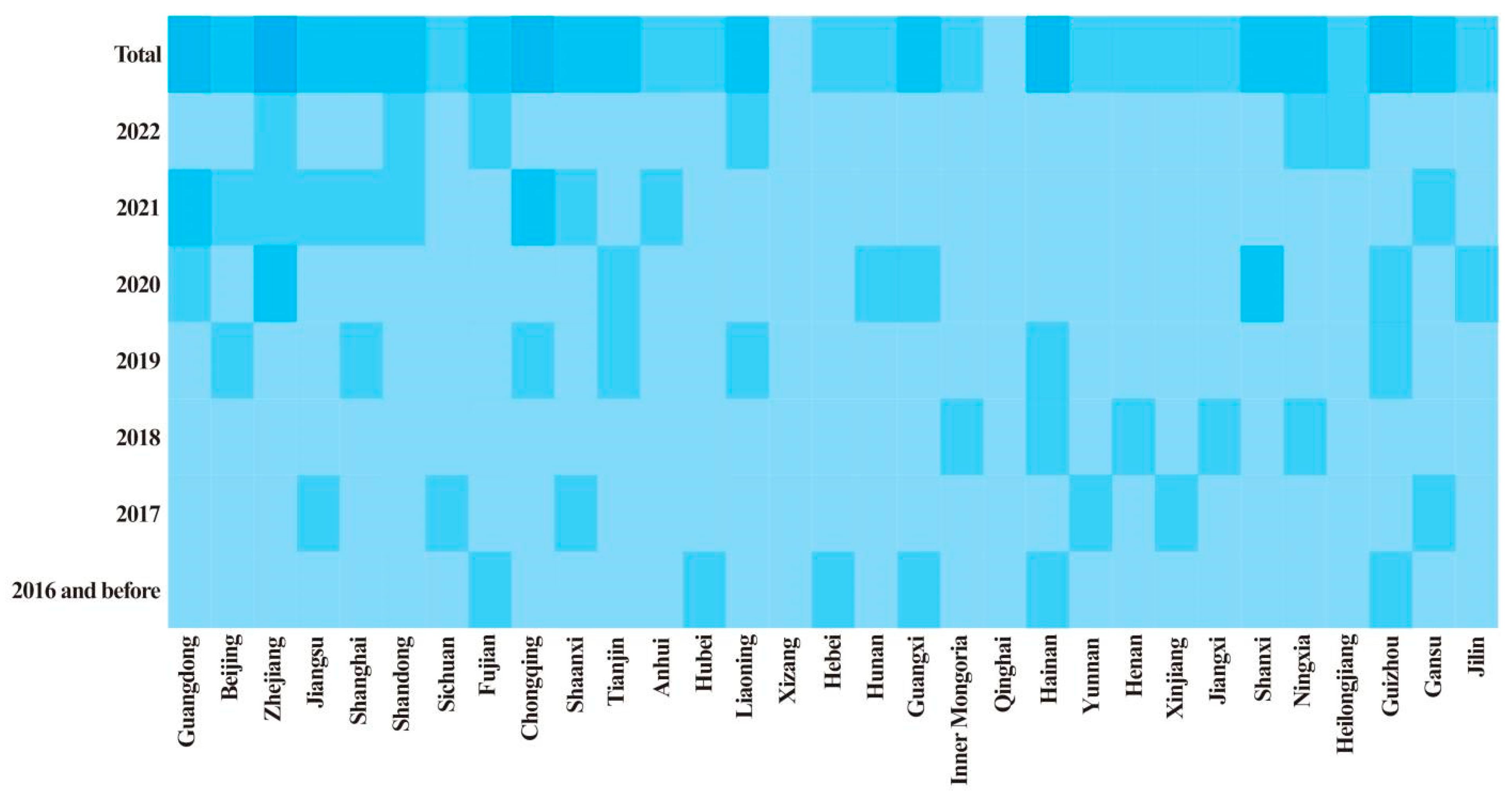
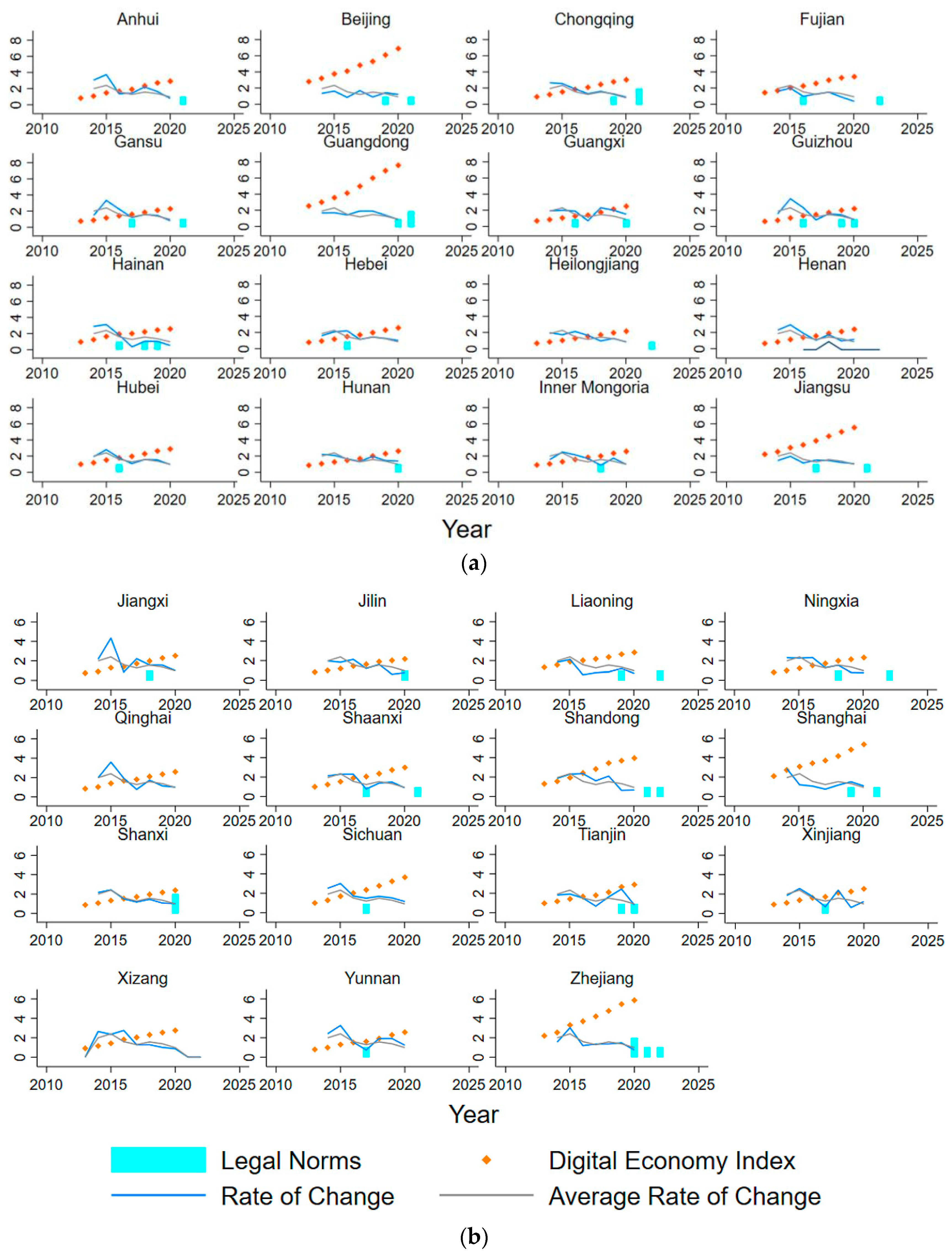
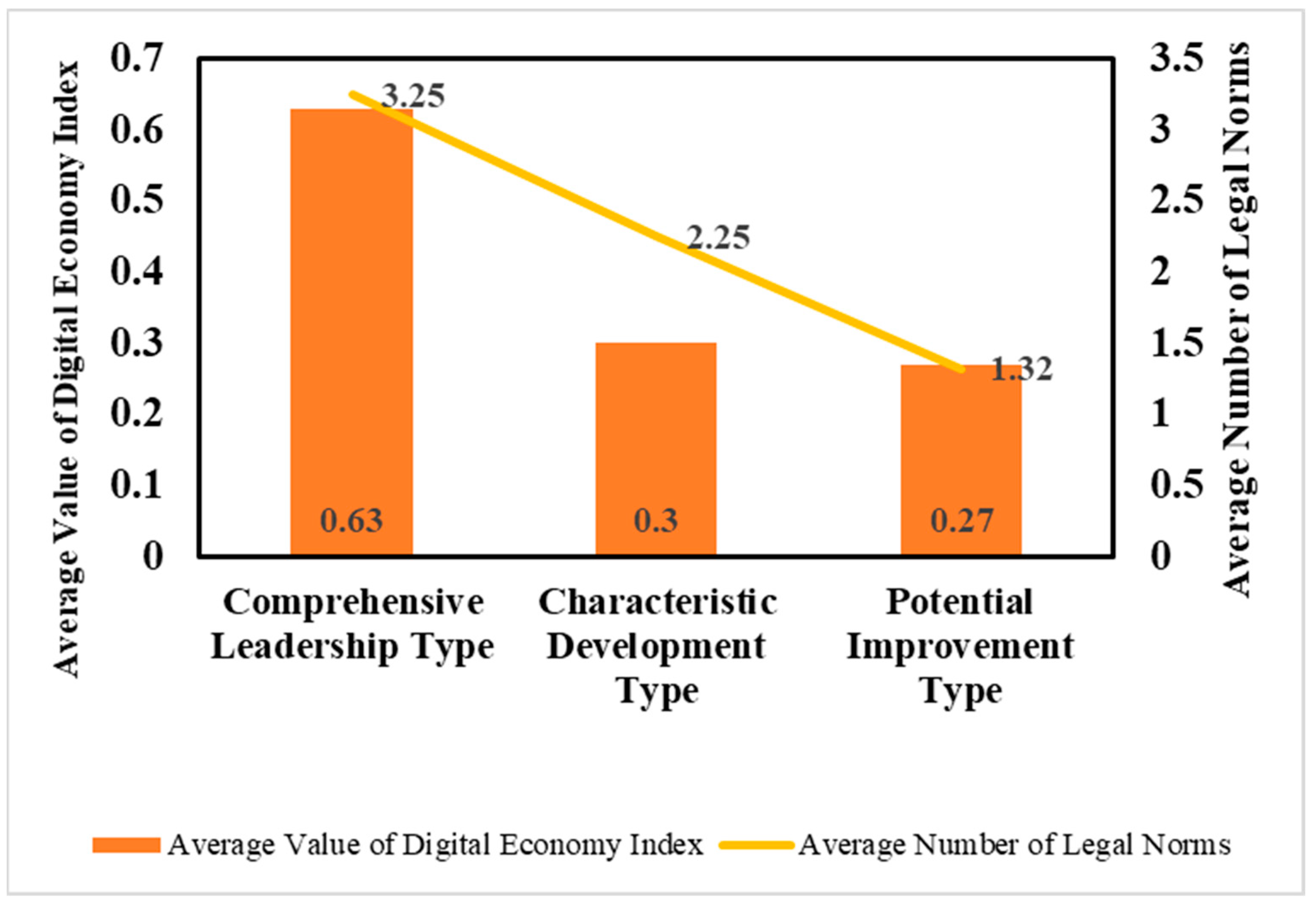
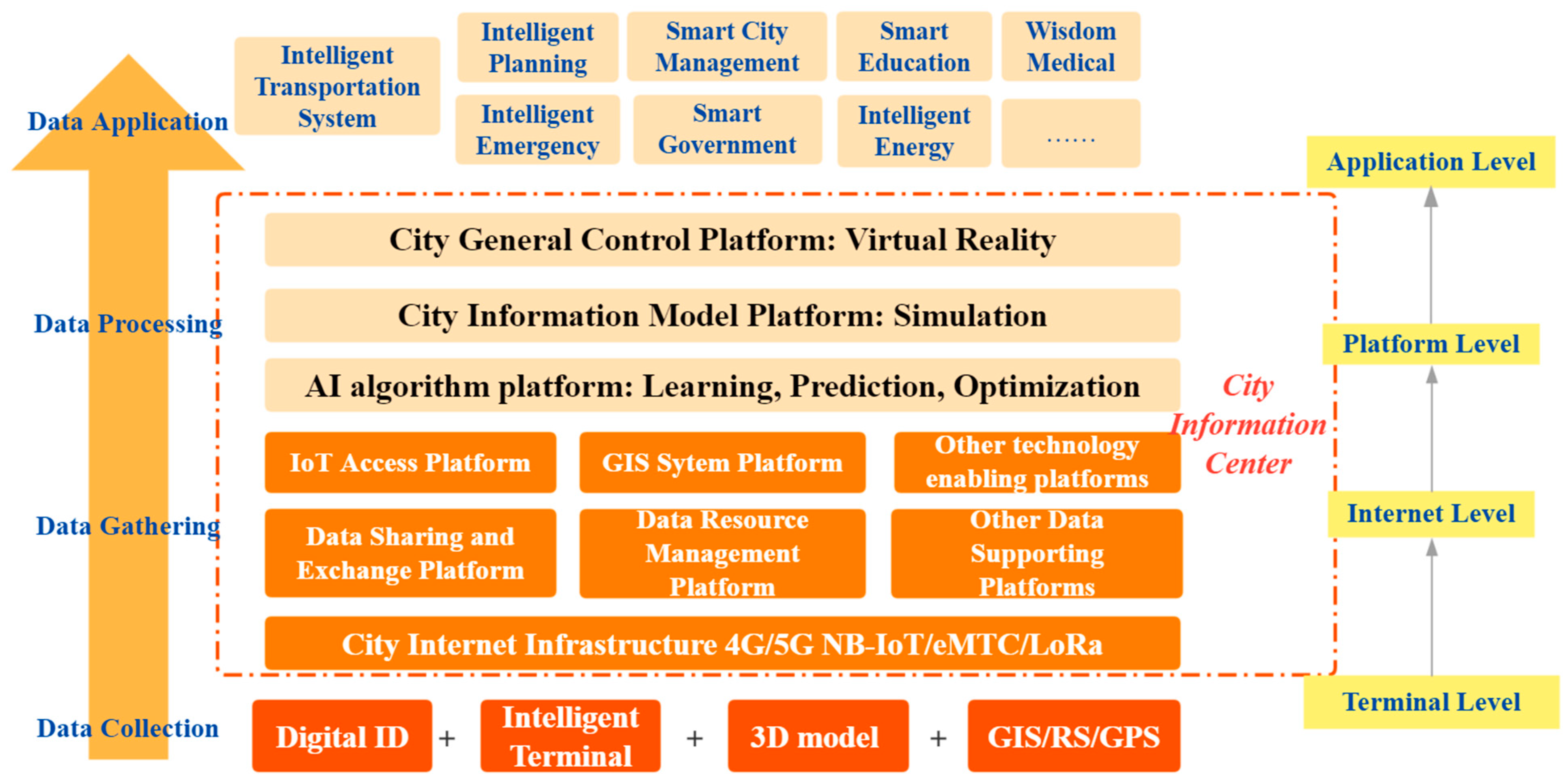
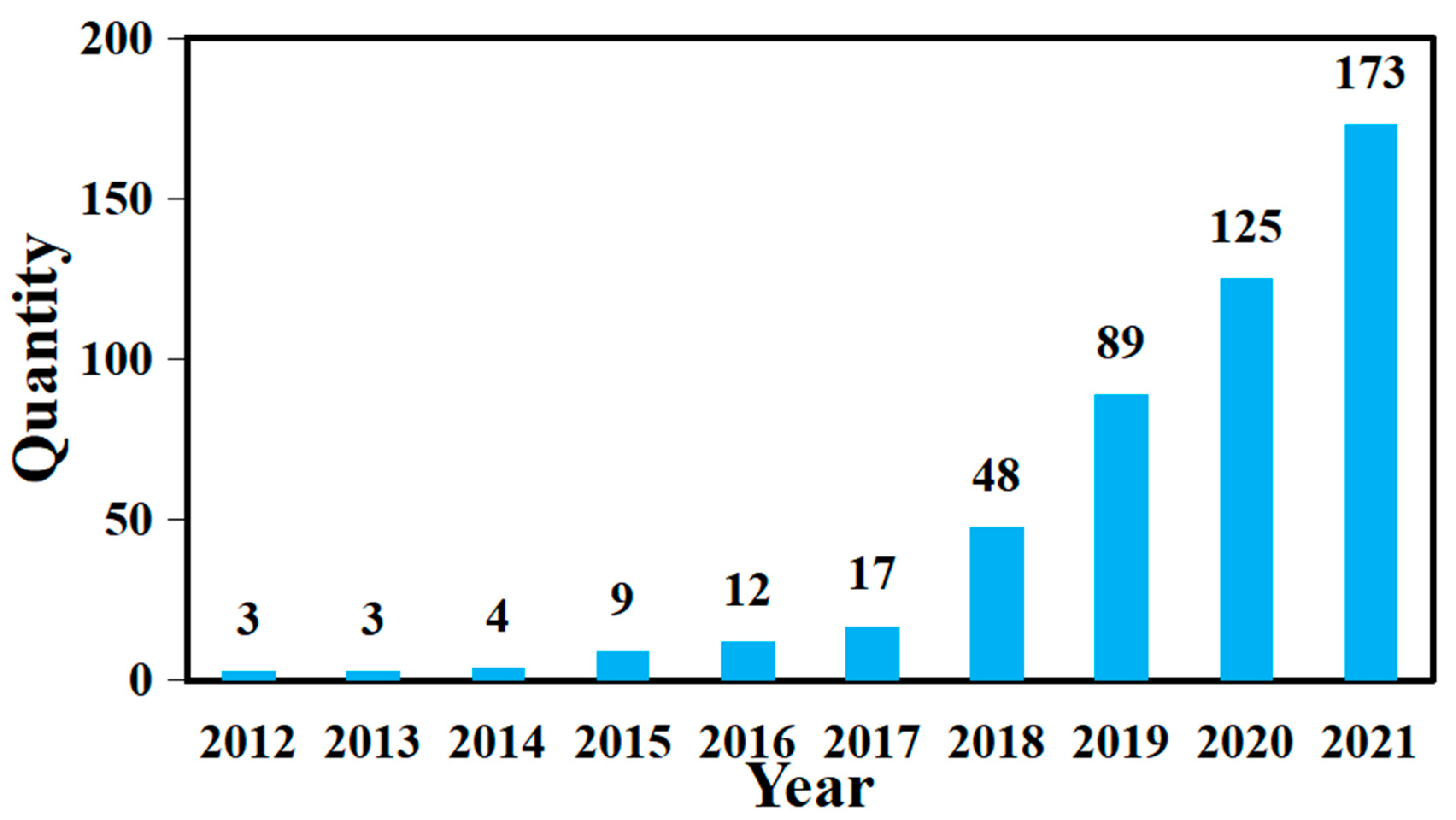




| Primary Dimension | Secondary Dimension | Specific Indicators |
|---|---|---|
| Information Development | Information Foundation | Cable Density |
| Mobile Phone Base Station Density | ||
| Proportion of IT Practitioners | ||
| Informatization Influence | Total Telecom Business | |
| Software Business Revenue | ||
| Internet Development | Fixed Internet Foundation | Internet Access Port Density |
| Mobile Internet Foundation | Mobile Internet Penetration | |
| Fixed Internet Impact | Proportion of Broadband Internet Users | |
| Mobile Internet Impact | Proportion of Mobile Internet Users | |
| Digital Transaction Development | Digital Trading Fundamentals | Websites per 100 Companies |
| Business Use of Computers | ||
| Proportion of E-commerce Companies | ||
| The Impact of Digital Transactions | E-Commerce Sales | |
| Online Retail Sales |
| Name | Release Time | Publisher |
|---|---|---|
| Interim Administrative Measures for the National Smart City Pilot | 2012 December | Ministry of Housing and Urban-Rural Development |
| Pilot Technical Guide for the Construction of a Smart City Spatiotemporal Information Cloud Platform | March 2013 | Bureau of Surveying, Mapping and Geographic Information |
| Notice on Carrying out the 2013 Pilot Application for National Smart City | May 2013 | Ministry of Industry and Information Technology, Ministry of Housing and Urban-Rural Development |
| Notice on Accelerating the Implementation of the Relevant Work of the Information Benefiting the People | January 2014 | National Development and Reform Commission etc. |
| National New Urbanization Plan (2014–2020) | March 2014 | State Council |
| Notice on Matters Related to Accelerating the Construction of Demonstration Projects for Intelligent Application of Urban Public Transportation | April 2014 | Ministry of Transport |
| Notice on Matters Related to Accelerating the Construction of Demonstration Projects for Intelligent Application of Urban Public Transportation | June 2014 | National Development and Reform Commission |
| Guiding Opinions on Promoting the Construction and Development of Smart Cities | August 2014 | National Development and Reform Commission etc. |
| Guiding Opinions on Promoting the Development of Smart Tourism | January 2015 | China National Tourism Administration |
| Notice on the Relevant Work on Promoting the Transformation and Upgrading of Digital Cities to Smart Cities | May 2015 | National Bureau of Surveying, Mapping and Geographic Information |
| Guiding Opinions on the Construction and Application Implementation of Smart City Standard System and Evaluation Index System | October 2015 | National Standards Commission etc. |
| Several Opinions on Further Strengthening the Planning and Management of Urban Planning and Construction | February 2016 | State Council |
| Technical Outline of Smart City Spatiotemporal Big Data Platform Construction (2019) | January 2019 | Office of Natural Resources |
Publisher’s Note: MDPI stays neutral with regard to jurisdictional claims in published maps and institutional affiliations. |
© 2022 by the authors. Licensee MDPI, Basel, Switzerland. This article is an open access article distributed under the terms and conditions of the Creative Commons Attribution (CC BY) license (https://creativecommons.org/licenses/by/4.0/).
Share and Cite
He, W.; Li, W.; Deng, P. Legal Governance in the Smart Cities of China: Functions, Problems, and Solutions. Sustainability 2022, 14, 9738. https://doi.org/10.3390/su14159738
He W, Li W, Deng P. Legal Governance in the Smart Cities of China: Functions, Problems, and Solutions. Sustainability. 2022; 14(15):9738. https://doi.org/10.3390/su14159738
Chicago/Turabian StyleHe, Wei, Wanqiang Li, and Peidong Deng. 2022. "Legal Governance in the Smart Cities of China: Functions, Problems, and Solutions" Sustainability 14, no. 15: 9738. https://doi.org/10.3390/su14159738
APA StyleHe, W., Li, W., & Deng, P. (2022). Legal Governance in the Smart Cities of China: Functions, Problems, and Solutions. Sustainability, 14(15), 9738. https://doi.org/10.3390/su14159738






